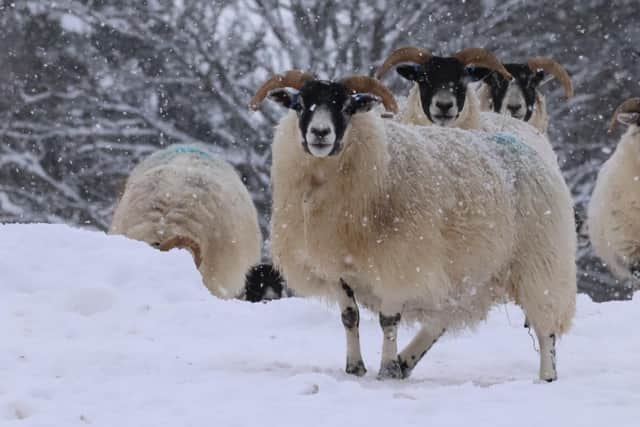Farm success brings benefits for wildlife - Louise de Raad
At Auchnerran we want to show how hill-edge, marginal farmland in Scotland can be managed to be profitable and benefit game, wildlife and other “natural capital”, and feed into land-use policy. As a part of this, we are constantly working to improve the farm to ensure it’s a fundamentally sound economic enterprise.
Our main commodity is the sheep flock which has now grown to around 1,400 ewes and which grazes the adjacent grouse moor in the summer. This helps to manage the moorland habitat, whilst the sheep act as "mops” to keep tick numbers down. We rely on good grass-growth on the farm to provide grazing, but we still require supplementary food for the flock through the winter in the form of silage and brassicas, and we overwinter away our hoggs.
Advertisement
Hide AdAdvertisement
Hide AdWhilst improving our farm operation we don’t want to do this at the expense of the wildlife that we, like so many farmers, are proud to have – indeed, we want to benefit our game and wildlife wherever possible.


We have just published our third annual report for the farm for the year to December 31, 2021.
This highlights the farming and research activities and financial position and shows that 2021 was a tough year on several counts. Poor weather and access restrictions on visits due to Covid-19 were also major factors but even with those challenges significant progress was made in terms of the farm, wildlife and the environment, science and research, the farm shoot, and profitability.
Although visits to the farm were curtailed and, in particular, the opportunities for welcoming policy makers and others were much reduced, the year did see completion of our new visitor centre. Weather was unpredictable – there was a cold spring with significant snowfall in May 2021 and a dry summer that followed. Whilst early lamb losses were higher than normal, it was encouraging that farm output overall was maintained at a good level with a high lambing rate.
Monitoring the wildlife of the farm and maintaining our long-term data sets takes constant effort and thanks are due to the staff and students who contribute so much to this ongoing work.
One of our main findings for 2021 has been that our healthy visiting wader population was heavily predated by badgers. Our latest research shows that the predation occurred during a specific climactic window, of dry periods in conjunction with significantly colder days. This suggests that it is likely that the exceptionally high predation events were at least in part due to much lower food availability for the badgers during this window, as earthworm activity and availability would have been so much lower.
We also completed the farm’s natural capital assessment and carbon audit. The shoot also had a good year and gave much pleasure to those lucky enough to have taken part.
The bottom line is that Auchnerran is coming out of the Covid-19 crisis stronger than ever. This year we have a new management structure in place, and our team includes some new staff. We are investigating the impact that our intensified farming operations over the past five years have had on breeding waders and are now shifting our focus onto trialling modern agricultural practices, with some exciting new projects on grassland management, mob grazing and direct drilling in the pipeline.
Advertisement
Hide AdAdvertisement
Hide AdFor more information you can download the GWSDF Auchnerran annual report at https://www.gwct.org.uk/media/1350092/Auchnerran-Report-2021-LR-SP.pdf
Dr Louise de Raad, Game and Wildlife Conservation Trust Head of Research Scotland and Director of the Game and Wildlife Scottish Demonstration Farm
Comments
Want to join the conversation? Please or to comment on this article.